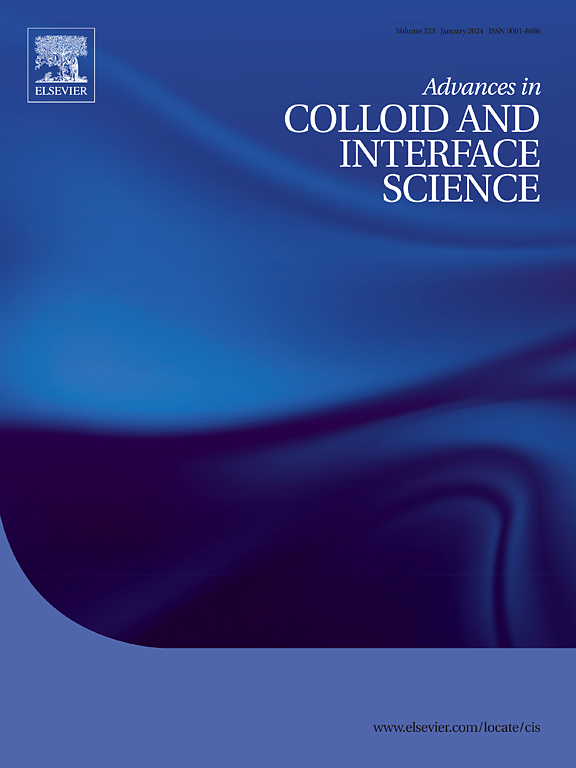On the different coalescence mechanisms in foams and in emulsions
IF 15.9
1区 化学
Q1 CHEMISTRY, PHYSICAL
引用次数: 0
Abstract
Coalescence is the less well understood destabilization process in emulsions and foams. These dispersions are stabilized by layers of surface-active agents adsorbed at the surface of drops and bubbles. The compactness of the layer is directly linked to the surface tension; the more compact the layer, the lower the tension. It is currently admitted that in dense emulsions (high drop fraction) and foams stable for more than a few minutes, coalescence is a thermally activated process involving nucleation of holes in the films separating drops and bubbles. In general, the less compact the layer, the easier the coalescence. In some emulsions however, the opposite behavior is observed: the more compact the layer, the easier the coalescence. Different models allow accounting for these two opposite situations, but the conditions in which they should be applied are not clear. After comparing the models and the experiments reported in the literature, we propose a few ideas to explain the difference in coalescence behavior.

泡沫和乳液中不同的聚结机制
在乳剂和泡沫中,聚结是一种鲜为人知的不稳定过程。这些分散体通过液滴和气泡表面吸附的表面活性剂层来稳定。层的致密性与表面张力直接相关;层越致密,张力越低。目前公认,在致密的乳剂(高液滴分数)和稳定超过几分钟的泡沫中,聚并是一个热激活的过程,涉及分离液滴和气泡的膜中孔的成核。一般来说,层越不致密,越容易合并。然而,在某些乳剂中,观察到相反的行为:层越致密,越容易聚并。不同的模型允许考虑这两种相反的情况,但它们应该应用的条件并不清楚。在比较了模型和文献中报道的实验之后,我们提出了一些解释合并行为差异的想法。
本文章由计算机程序翻译,如有差异,请以英文原文为准。
求助全文
约1分钟内获得全文
求助全文
来源期刊
CiteScore
28.50
自引率
2.60%
发文量
175
审稿时长
31 days
期刊介绍:
"Advances in Colloid and Interface Science" is an international journal that focuses on experimental and theoretical developments in interfacial and colloidal phenomena. The journal covers a wide range of disciplines including biology, chemistry, physics, and technology.
The journal accepts review articles on any topic within the scope of colloid and interface science. These articles should provide an in-depth analysis of the subject matter, offering a critical review of the current state of the field. The author's informed opinion on the topic should also be included. The manuscript should compare and contrast ideas found in the reviewed literature and address the limitations of these ideas.
Typically, the articles published in this journal are written by recognized experts in the field.

 求助内容:
求助内容: 应助结果提醒方式:
应助结果提醒方式:


